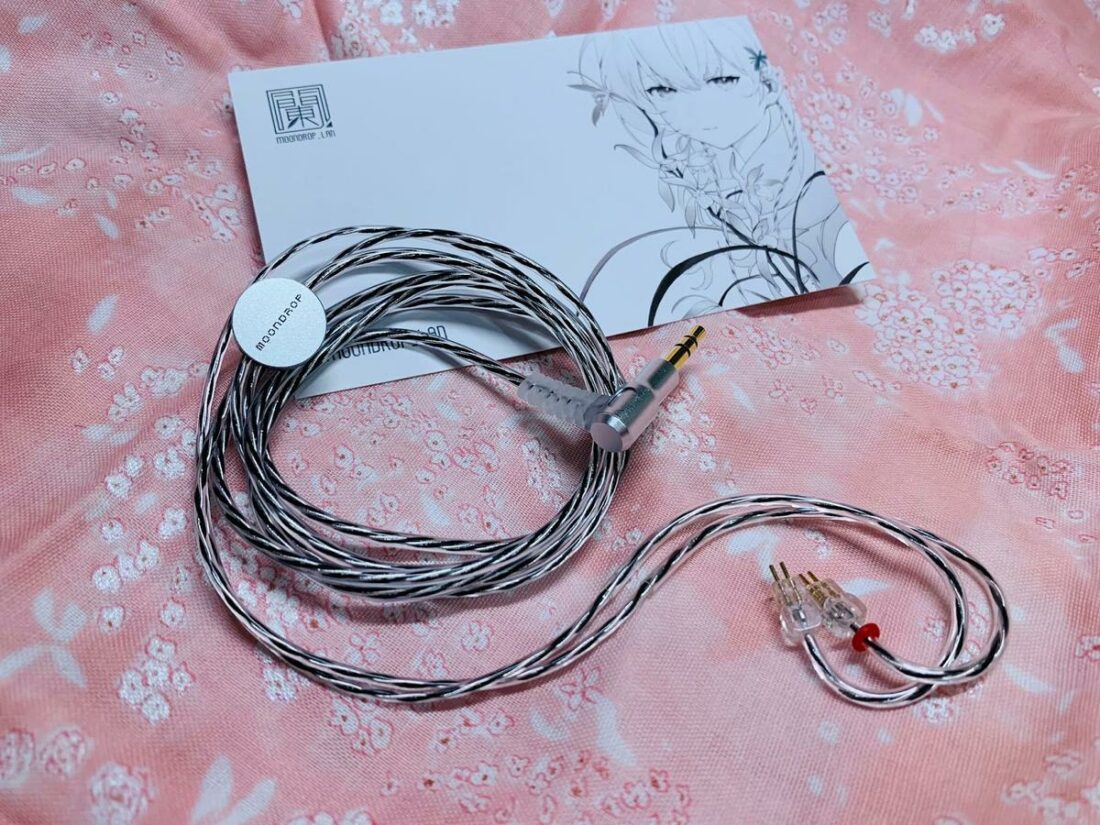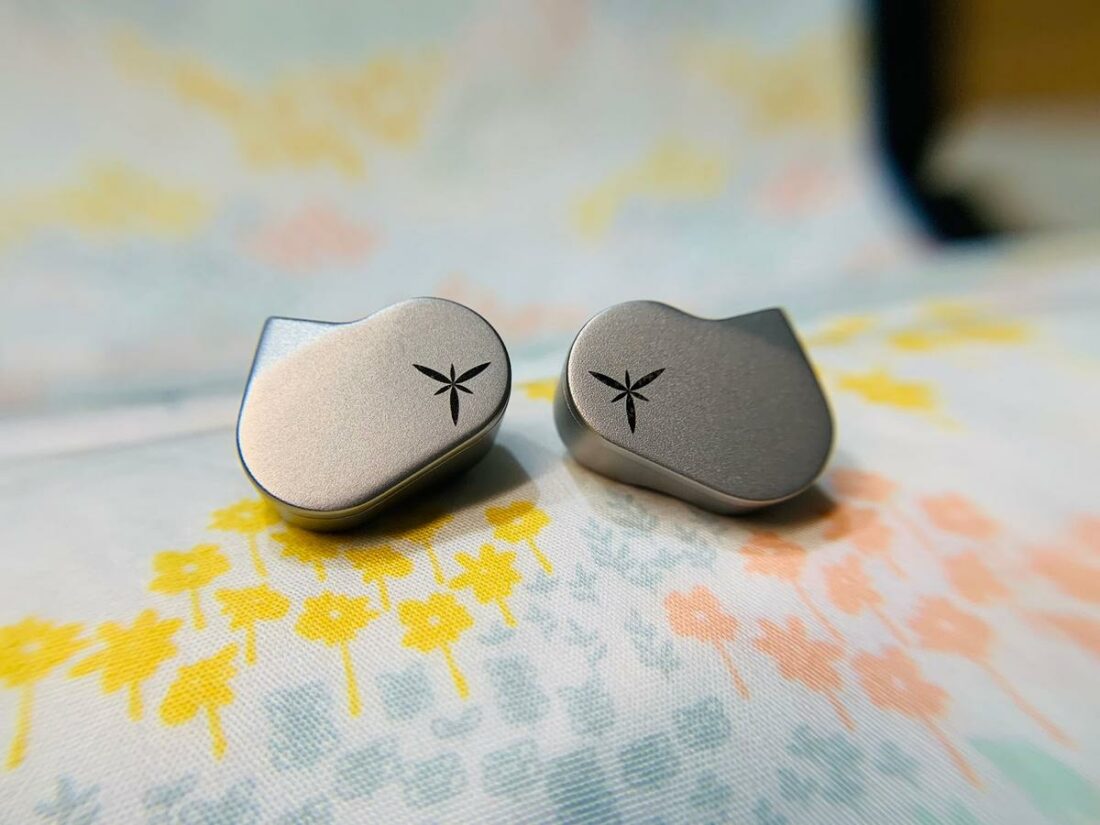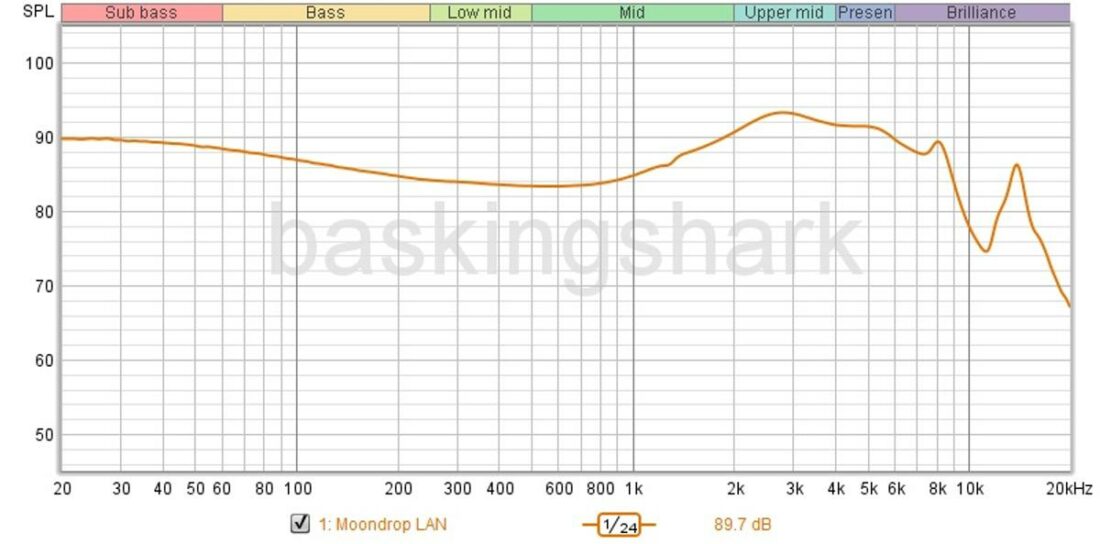The LAN struggle to differentiate themselves from the cut-throat, ultra-budget pack and are merely average in most departments.
With new models pumped out weekly, there has never been a better time to be a budget ChiFI enthusiast. However, many “hype-trains” get derailed in a saturated market after a few weeks. Attention is drawn to another flavor of the week, for their fifteen minutes of fame, only to disappear once a newer toy comes out.
In a Darwinian survival of the fittest, manufacturers use novel ways to get a one-up on their rivals – it is common nowadays to see collaborations, exotic drivers, waifus, and eargasmic graphs. Ultimately though, if the companies only see the forest for the trees, mediocre tuning will still ruin most marketing shenanigans.
- Ergonomic fit, solid build
- Above average isolation
- Balanced tonality
- Natural timbre
- Decent price to performance ratio
- Middling technicalities
- Not for bassheads
- Undynamic; may be too boring
- Jack of all trades, master of none
The Moondrop LAN we are reviewing today fulfill two of the latter schemes – waifus and beautiful graphs – in a bid to be the prettiest flower in the garden. Indeed, the word “LAN” – 兰 in simplified Chinese, or 蘭 in traditional Chinese – refers to the orchid flower (not a ‘local area network,’ haha!)
Let’s read on to see if the LAN turn out to be as fresh as a daisy or a mere shrinking violet!
Company Overview
Moondrop was formed in 2015, and since then, it has come leaps and bounds, and is now one of the preeminent leaders in the ChiFi industry.
The company has released several crowd-favorite IEMs, such as the CHU, Quarks DSP, Variations, Blessing 2, Dusk, Aria 2021, KATO, and Starfield (to name a few). Moondrop has even ventured into earbuds, some considered best-in-class (e.g., Chaconne and Liebesleid). Moondrop also has dabbled in the TWS game with the Sparks and Nekocake.
Technical Specifications
- Form: IEMs
- Drivers: 1 x 10mm beryllium-plated dome composite diaphragm dynamic driver
- Impedance (Ohm): 32Ω (@1kHz)
- Sensitivity (dB): 120dB/Vrms (@1kHz)
- Frequency Response (Hz): 20 Hz – 20 kHz
- Removable Cable: Y
- Source Plug: 3.5mm TRS, single-ended
- Cup/Shell Plug: 0.78mm, 2-Pin
Packaging

In the box
- Moondrop LAN IEMs
- 3 pairs of silicone ear tips (S, M, L)
- Soft carrying pouch
- Cable
- Anime waifu postcard
For a sub-USD$40 set, the accessories are decent enough.

Only one variant of silicone ear tips are provided. These are quite serviceable, though the addition of some of Moondrop’s other famous tips – for example, Spring tips – would not have gone unappreciated.
Cable
Unfortunately, there is no information on what the stock cable is made from. Suffice to say, it is on the thinner side, though it is supple and tangle-free. The cable has minimal microphonics but comes without a chin cinch.
There are the letters “R” and “L” on the cable terminals for the right and left sides, respectively, in addition to a red band on the right terminal.

Pouch
The soft carrying pouch is made of a polymer material and is quite flimsy. The pouch operates via a fastener mechanism, and the contents probably won’t survive a drop or compressive force.

Design
The ovoid housings are fashioned from stainless steel via a MIM (metal injection molding) metallurgy process – this involves high-temperature sintering mold formation of the shells.
This is actually the first time Moondrop has used this technique, and I’ve no complaints with the solid build this has produced.

Unfortunately, the sterile-looking gray aesthetics don’t match the LAN’s flowery namesake, and perhaps something more vibrant like the Tanchjim Hana’s housing would be more felicitous.
There has been much gnashing of teeth on audio forums about the shells of Moondrop IEMs suffering from pain peeling. To nip this in the bud, it seems the LAN’s chassis is pure metal sans paint.
There are no left/right markings on the shells, so newcomers to the hobby might have issues identifying the sides. Nevertheless, the red band above the right cable terminal can assist once connected.
Comfort
The LAN are light and ergonomic; I use them for hour-long listening sessions without discomfort.

I do not experience driver flex, but this is dependent on the ear tips used and individual ear anatomy.
Internals
Each earpiece houses a 10mm beryllium-plated dome composite diaphragm dynamic driver encased within an internal brass acoustic cavity. An N52 magnet with ultra-thin 0.03mm CCAW (copper-clad aluminum wire) voice coil completes the set-up.
For the measurement-inclined, Moondrop advertises that this driver provides very low distortion at <0.05%.
Speaking about beryllium, it was all the rage just a couple of years back but has since been somewhat overshadowed by the recent planar and dual DD driver craze.

Moondrop LAN Sound
The LAN are moderately easy to drive, though amplification may help them scale in bass tightness and dynamics.

The LAN are tuned closely to Moondrop’s virtual diffuse sound field (VDSF) philosophy, which is the company’s in-house evolution of the Harman curve.
Timbre is quite organic, in keeping with the LAN’s single DD roots. Vocals and acoustic instruments sound natural, though, note weight is on the thinner side.
With regards to technical chops, the LAN won’t uproot any trees. Imaging is quite commendable, though the soundstage is bang average, with music sounding quite “in your head.” The LAN are not a very detailed pair of IEMs, and instrumentation can sound congested, especially when complex tracks come out to play.
When compared against other garden variety single DDs at similar prices, the LAN are quite undistinguished.
Bass
The LAN’s bass is a hair north of neutral, with a slight predominance in the sub-bass. The bass extension is not the deepest, though a rumble is heard on bass-heavy tracks.
Bass speed is moderate, with no mid-bass bleed, though texturing is sometimes one-noted.
The LAN are definitely not one for our basshead brethren, as they sound anemic for bass-forward genres such as EDM and hip hop.
Midrange
There’s a slight recession in the lower midrange, with no copious mid-bass to encroach on this area. This provides an open and transparent midrange.
With a 7 – 8 dB pinna gain, the upper mids are forwards without being shouty, and the LAN do not cause fatigue.
Treble
The upper treble continues from the slight rise in upper mids, with moderate extension. The treble lies on the conservative side, with little air and sparkle heard. Sibilance is very mild, but there is admittedly a loss in resolution as a trade-off.
The sound signature is pretty balanced, though every rose has its thorn, and the LAN can come across as boring and undynamic.
Comparisons
The LAN will be compared against other budget single DD pairs. Hybrids, planars, and pure BA IEMs were excluded from the comparison as the different transducer types have their own pros and cons.

Vs. Moondrop CHU
The CHU share a similar DNA to the LAN, though the former have a more boosted treble with a thinner note weight. The CHU are more sibilant and fatiguing, with a more artificial timbre.

The CHU shade their younger sibling in technicalities: they boast slightly superior imaging, soundstage, micro-detailing, and instrument separation.
The CHU have an annoying non-detachable cable with a poor fit, whereas the more expensive LAN have a detachable cable with better ergonomics.
Vs. Tangzu Audio Wan’er
The Wan’er are tuned warm neutral, with a thicker note weight. They have more mid-bass, though the bass isn’t as tight, with mid-bass bleed present. The Wan’er have a less pronounced upper midrange, with vocals sounding further back than the LAN.

Technically, the Wan’er are a step behind, with a more intimate soundstage and worse imaging and micro-details.
The Wan’er are cheaper and easier to drive.
Vs. 7Hz Salnotes Zero
The Zero are a neutral bright set, and sound more sterile and analytical. They are brighter and more fatiguing, with a less natural timbre: nasal vocals and some shoutiness is displayed.

The Zero are more resolving and are a cut above in soundstage, imaging, and micro-details.
The Zero’s shells have perpendicular edges, which may pose fit issues; this isn’t the case on the ergonomic LAN. The Zero, however, are less expensive.
Vs. Truthear HOLA
The HOLA are an L-shaped pair of IEMs, with bigger bass and a darker treble. However, the bass isn’t as clean, and the HOLA have inferior technicalities.

Note weight is thicker on the HOLA, with a more analogue signature. The HOLA are also quite well accessorized, with a good fit.
Where to Buy

Conclusion
Let’s not beat about the bush. Do the LAN come out smelling of roses?
The LAN do not exactly wither on the vine, as they can claim good build, a natural timbre, and balanced tonality as their redeeming traits. However, they are just average in the big scheme of things.
Don’t get me wrong, the LAN are quite decent and do more things right than wrong. However, they do not gild the lily and end up as little wallflowers in a vast greenhouse with more attractive and colorful flowers on display.
They might stand out if the LAN were released just a few months back. Unfortunately, in recent times, there has been an influx of competitive budget releases. Even compared to the older Moondrop CHU – the LAN are weaker in technicalities, though the latter have a detachable cable and sound smoother.
Nevertheless, mighty oaks from little acorns grow, and perhaps Moondrop can take this garden experiment to fine-tune and refine future seedlings. The LAN need a little bit more panache to come into full bloom.
